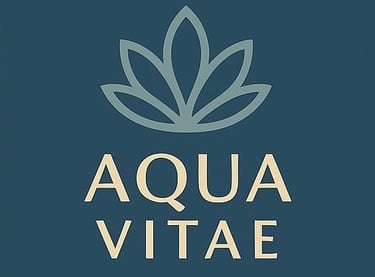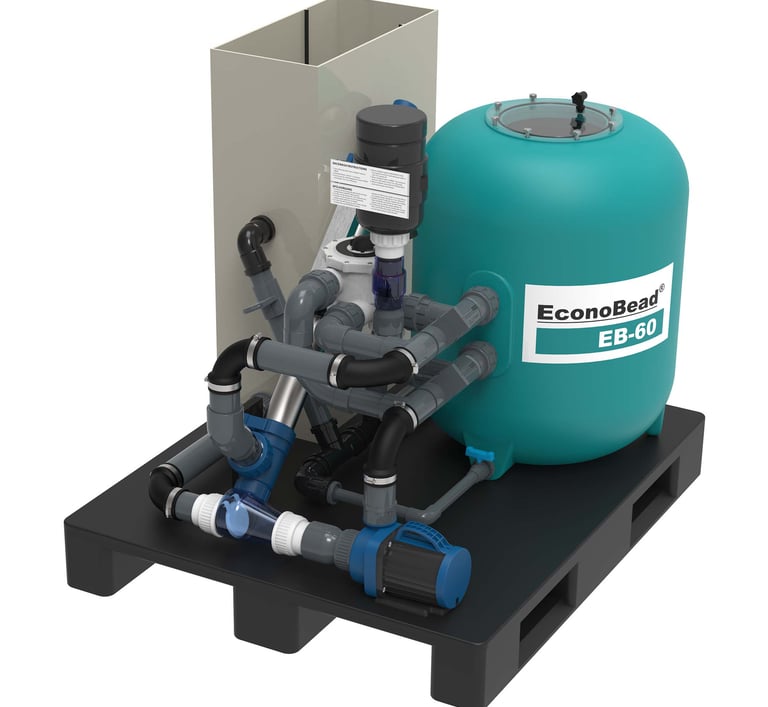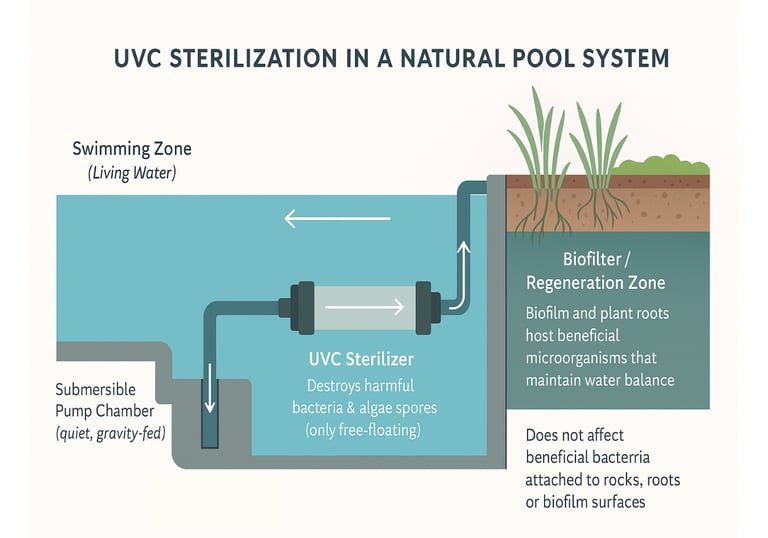How to Prevent Algae in Natural Pools | Aqua Vitae Guide
Learn what causes algae in natural pools and ponds — and how to prevent it naturally. Tips, tools & guidance from Aqua Vitae's expert design team.
8/18/20253 min read
Understanding Algae in Natural Pools: Causes, Control & Prevention
What’s the Difference Between Natural, Saltwater & Chlorine Pools
Algae are simple aquatic organisms that thrive in water with sunlight, warmth, and excess nutrients — especially phosphates and nitrates. These nutrients often come from decomposing leaves, uneaten fish food, runoff from soil, or even tap water high in minerals.
In natural pools, algae becomes a problem when one of the three key elements gets out of balance:
Light (especially direct sun in shallow or still zones)
Nutrients (usually from organic debris or overfeeding)
Water circulation and oxygenation (too little movement = stagnant zones where algae thrives)

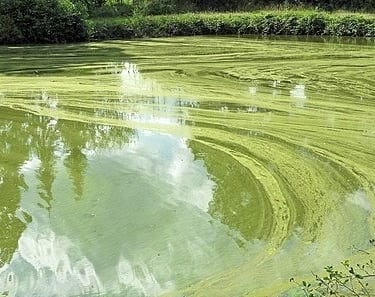
Chlorine Pools
Algae is not your enemy — it’s a messenger. It tells you when your pool or pond needs attention. With the right balance of plants, circulation, and biofiltration, you can eliminate algae naturally without chemicals. At Aqua Vitae, we help clients around the world design healthy aquatic systems from the start — and we also offer equipment kits and ongoing support to solve algae problems in existing pools. Whether you're planning a new build or restoring clarity to a beloved water feature, we’re here to help.

Green algae – most common; forms slimy layers or green water
String algae – long, hair-like strands that cling to rocks or plant stems
Blue-green algae (cyanobacteria) – can release toxins and spread rapidly
Brown algae – usually caused by low light or silty environments

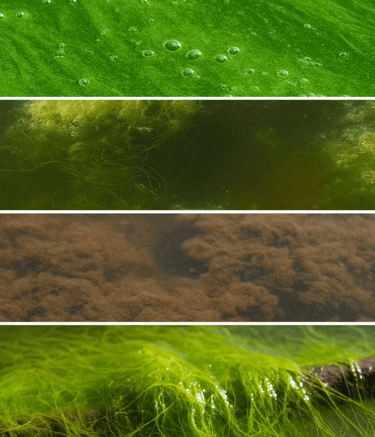
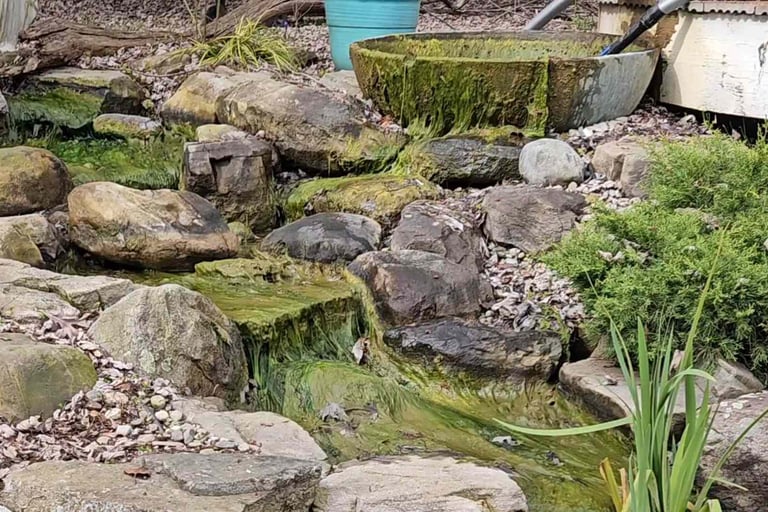

Algae blooms often occur during:
Spring warm-ups — when water warms faster than plant life reactivates
Excess debris — fallen leaves, dirt, or decaying plant matter
Imbalanced filtration — when biological filters aren’t yet mature or undersized
Too many nutrients — from fish waste, runoff, or nutrient-rich well/tap water
Types of Algae You May Encounter
Algae is one of the most common — and misunderstood — issues in natural swimming pools and ponds. It’s not just a nuisance; it’s a symptom of imbalance. Whether you're dealing with cloudy water, green film, or slippery surfaces, understanding why algae blooms occur is the first step toward long-term clarity. In this guide, we’ll break down the science behind algae, what fuels it, and how to prevent it — using natural methods that respect your ecosystem.
What Is Algae and Why Does It Grow?
What Triggers an Algae Bloom?
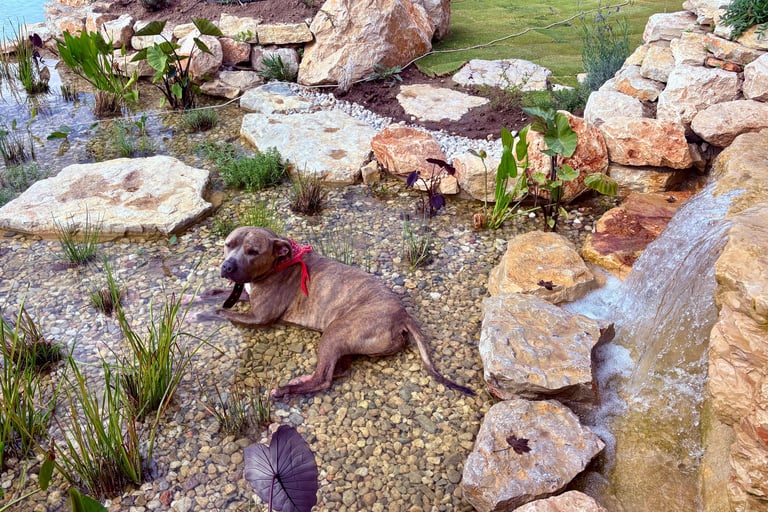

How to Prevent Algae in a Natural Pool
Plant Zones – Healthy, fast-growing aquatic plants outcompete algae for nutrients.
Skimming & Pruning – Regular surface skimming and plant maintenance keep debris out.
Good Circulation – Pumps and streams prevent stagnant zones and oxygenate water.
UV Sterilizers – These eliminate free-floating algae before it multiplies.
Phosphate Control – Products like Phos-X can bind excess phosphates safely.
Avoid Overfeeding Fish – Uneaten food is pure algae fuel.
Natural Tools & Equipment That Help
Aqua Vitae offers a selection of algae-fighting tools in our store, including:
UV sterilizers (for string and green algae)
Phosphate removers (for long-term nutrient control)
Skimmers, surface cleaners, and custom pump setups
Complete kits for balanced natural pool filtration
We also design custom filtration systems and plant layouts to help you stay algae-free year-round.
The Symptom is the first sign of the Cure
Even the most beautiful natural pool can turn green if algae takes hold. But why does it happen — and how can you stop it before it starts?
You may also like...
UV Sterilization for Natural Swimming Pools | Aqua Vitae
Learn how UV-C sterilization for natural swimming pools can ensure year round chemical-free, crystal-clear water that’s safe, clean & eco-friendly; naturally.
5 Types of Natural Pool Filtration Systems | Aqua Vitae
Explore the five main filtration systems used in natural swimming pools. Learn the pros, cons, and ideal applications of each with Aqua Vitae’s expert guide.
Discover how natural swimming pools compare to traditional chlorine and saltwater systems — in health, maintenance, and long-term beauty.
Natural Pools vs Chlorine Pools vs Salt Pools | Aqua Vitae
Experience the future of swimming with natural pools.
© 2025 Aqua Vitae. All rights reserved.
